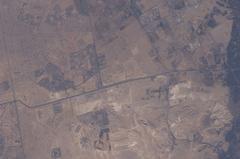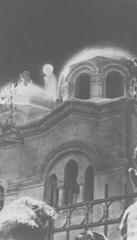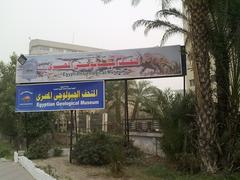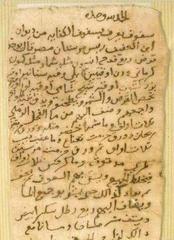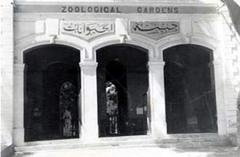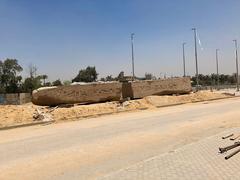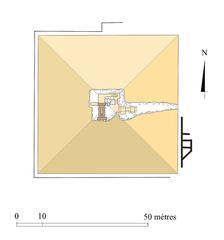
Pyramid G1-A: Visiting Hours, Tickets, and Historical Significance in Giza Governorate, Egypt
Date: 04/07/2025
Introduction
Pyramid G1-A, located on the iconic Giza Plateau within Egypt’s Giza Governorate, is a remarkable testament to the architectural mastery and ritual traditions of ancient Egypt’s Fourth Dynasty. As the northernmost of the three subsidiary “Queen’s Pyramids” adjacent to the Great Pyramid of Khufu, Pyramid G1-A is believed to be the tomb of Queen Hetepheres I, Khufu’s mother. Its close alignment with the Great Pyramid not only demonstrates ancient Egyptians’ advanced astronomical understanding but also highlights the site’s ritual significance and the reverence held for royal women.
This detailed guide provides essential information for visiting Pyramid G1-A, including its historical background, cultural impact, visiting hours, ticketing, accessibility, safety advice, and tips for making the most of your experience. Whether you are a history enthusiast or a first-time traveler, this resource is designed to help you plan a meaningful and respectful visit to one of Egypt’s most treasured archaeological landmarks.
For the most accurate and up-to-date information, always consult official sources such as the Egyptian Ministry of Tourism and trusted travel platforms like Earth Trekkers.
Table of Contents
- Historical Background of Pyramid G1-A
- Archaeological and Cultural Significance
- Visitor Information
- Planning Your Visit
- Nearby Attractions
- Sustainability and Responsible Tourism
- Frequently Asked Questions (FAQs)
- Summary and Final Tips
- References
Historical Background of Pyramid G1-A
Constructed during the Fourth Dynasty (c. 2580–2560 BCE), Pyramid G1-A stands as the northernmost and most prominent of the subsidiary pyramids built alongside Khufu’s Great Pyramid. Ongoing archaeological research suggests it was intended as the burial site for Queen Hetepheres I, emphasizing the importance of royal women in Egyptian funerary traditions. With an original height of approximately 30 meters and a base of 49.5 meters, G1-A was built using locally quarried limestone blocks.
The pyramid’s location and alignment with the cardinal points and the main pyramid reflect the ancient Egyptians’ sophisticated knowledge of astronomy and cosmology. Its internal structure is relatively simple—a descending passage leads to a burial chamber, in contrast with the more complex interiors of the main pyramids.
(egyptra.pro)
(egyptmythology.com)
Archaeological and Cultural Significance
Religious and Symbolic Importance
Pyramids were not merely tombs; they embodied religious symbolism, representing the primeval mound of creation and the sun god Ra’s rays, thus reinforcing the divine nature of the pharaoh and his family. Mortuary temples and causeways connected the pyramids to ritual landscapes, enabling offerings and ceremonies to sustain the deceased in the afterlife. The meticulous astronomical alignment of G1-A and the main pyramids further illustrates this sacred worldview.
Archaeological Discoveries
Excavations around G1-A have revealed burial shafts, funerary objects, and remains of mortuary chapels, offering insights into the burial practices and beliefs of Egypt’s Old Kingdom. Modern technologies such as remote sensing have contributed to our understanding of the plateau’s subterranean features, though some claims remain unverified by leading experts.
Cultural Legacy
As part of the Giza complex, Pyramid G1-A is integral to Egypt’s image as a cradle of civilization, inspiring countless myths, legends, and research. The Giza pyramids are designated UNESCO World Heritage Sites and continue to attract millions of visitors each year.
Visitor Information
Location and Directions
Pyramid G1-A is located immediately east of the Great Pyramid on the Giza Plateau, about 13 km (8 miles) southwest of Cairo’s city center. The precise coordinates are 29.9792° N, 31.1342° E. The site is accessible by taxi, Uber, or guided tour from Cairo or Giza. The north entrance (near the Marriott Mena House Hotel) is the closest access point to the Queen’s Pyramids.
(findloveandtravel.com)
(touristsecrets.com)
Visiting Hours
- April–September: 7:00 AM to 5:00 PM
- October–March: 8:00 AM to 4:00 PM
- Last admission is one hour before closing.
- Hours may vary during holidays or special events; always confirm before your visit.
Tickets and Entry
- General Admission: ~240 EGP (adults), ~120 EGP (students)
- Main Pyramid Entry: Additional fee required for the Great Pyramid interior; G1-A and other Queen’s pyramids are generally closed for interior visits.
- Where to Buy: On-site at official ticket booths or online through the Egyptian Ministry of Tourism portal.
(travelwithapen.com)
(globalhighlights.com)
Accessibility
The terrain around G1-A is sandy and uneven, with no paved walkways directly to the Queen’s pyramids. While recent upgrades have improved general accessibility, G1-A remains difficult for wheelchair users or those with limited mobility. Camel or horse-drawn carriages can assist visitors across parts of the complex but do not reach G1-A directly.
Guided Tours
Licensed Egyptologist guides are available at the entrance or can be booked in advance. They provide invaluable insights and ensure an efficient, safe, and educational visit. Always verify guide credentials by checking for Ministry of Tourism badges.
Planning Your Visit
Essential Travel Tips
- Best Time to Visit: Early morning (opening hours) for cooler temperatures and fewer crowds, especially October–April.
- What to Bring: Water, sunscreen, hat, sunglasses, reusable water bottle, modest clothing covering shoulders and knees, and sturdy footwear.
- Photography: Permitted outside; interior photography is restricted. Tripods may require an additional fee. Drones need special permits.
Facilities and Amenities
- Restrooms near main entrances.
- Minimal shaded areas—bring sun protection.
- Vendors offer souvenirs and refreshments; expect persistent sales tactics.
- Security includes metal detectors and bag checks at entrances.
- On-site signage is limited; a guide aids navigation and understanding.
Safety and Etiquette
- Personal Safety: Stay hydrated, wear sun protection, and secure valuables. Beware of unofficial guides or aggressive vendors; agree on prices before accepting services.
- Cultural Etiquette: Climbing the pyramids is strictly forbidden and enforced by law. Remain on designated paths, do not touch or remove stones, and ask permission before photographing local people.
- Tipping: Small tips for guides, drivers, and service staff are customary.
Nearby Attractions
- The Great Pyramid of Khufu: The largest and most famous pyramid.
- Pyramids G1-B and G1-C: Other Queen’s pyramids beside G1-A.
- The Great Sphinx: Iconic limestone statue.
- Solar Boat Museum: Home to Khufu’s reconstructed solar barque.
- Tombs of workers and nobles: Insight into the people who built the pyramids.
Sustainability and Responsible Tourism
- Use provided waste bins and reusable water bottles to reduce plastic waste.
- Remain on marked paths to protect archaeological sites and natural flora.
- Support ethical vendors and local artisans; avoid purchasing prohibited items.
- If using animal rides, choose operators with humane practices.
- Visit during off-peak hours to help manage overcrowding and preserve the visitor experience.
Frequently Asked Questions (FAQs)
Q: What are the visiting hours for Pyramid G1-A?
A: The Giza Plateau is open 7:00 AM–5:00 PM (April–September) and 8:00 AM–4:00 PM (October–March), with last entry one hour before closing.
Q: How do I buy tickets for Pyramid G1-A?
A: General admission tickets are available at the entrance or online. No separate ticket is required for G1-A.
Q: Is Pyramid G1-A wheelchair accessible?
A: Accessibility is limited due to sandy, uneven terrain.
Q: Can I enter Pyramid G1-A?
A: The interior is generally closed to visitors; you can view and photograph the exterior.
Q: Are guided tours available?
A: Yes, official guides can be hired on-site or pre-booked.
Q: Are drones allowed?
A: Drones require special permits and are generally restricted.
Summary and Final Tips
Pyramid G1-A offers a quieter, more intimate glimpse into Egypt’s royal funerary architecture, away from the crowds of the main pyramids. Its proximity to the Great Pyramid and the Sphinx, coupled with its unique history, make it a rewarding stop on any Cairo itinerary. Plan ahead by checking visiting hours, securing tickets in advance, and considering a licensed guide to enrich your experience.
For the latest updates, consider downloading the Audiala app for guided audio tours, maps, and real-time information. Follow our social media channels for travel tips, updates, and exclusive content about Egypt’s ancient wonders.
References
- Pyramid G1-a Visiting Hours, Tickets, and History: A Guide to Giza’s Queens’ Pyramid, 2025 (Egyptian Ministry of Tourism)
- Pyramid G1-A in Giza: Visiting Hours, Tickets, and Historical Insights, 2025 (egyptra.pro)
- Complete Guide to Visiting Pyramid G1-A: Visiting Hours, Tickets, Safety, and Tips for Exploring Cairo Historical Sites, 2025 (egyptonlinetour.com)
- How to Visit Pyramids of Giza Egypt, Earth Trekkers, 2025 (Earth Trekkers)
- The Ultimate Guide to Visiting the Pyramids of Giza, Tourist Secrets, 2025 (Tourist Secrets)
- Is It Safe To Visit Pyramids Of Giza?, Egypt Online Tour, 2025 (egyptonlinetour.com)
- Visit The Pyramids of Giza Egypt, Find Love And Travel, 2025 (findloveandtravel.com)
- How to Visit Great Pyramids of Giza & Sphinx, Travel with a Pen, 2025 (travelwithapen.com)
- Pyramids of Giza Opening Hours (pyramid-of-giza.com)
- How to Visit the Pyramids of Giza (globalhighlights.com)
- Is it Safe to Travel to Giza? (travelerbibles.com)
- BRICS Series: Safeguarding Egyptian Sites with Sustainable Tourism (capeargus.co.za)







